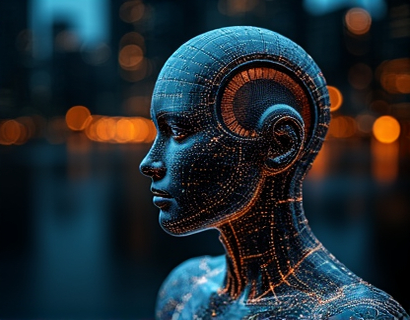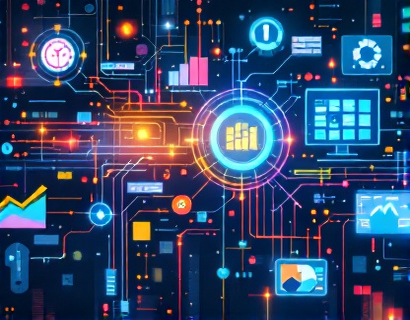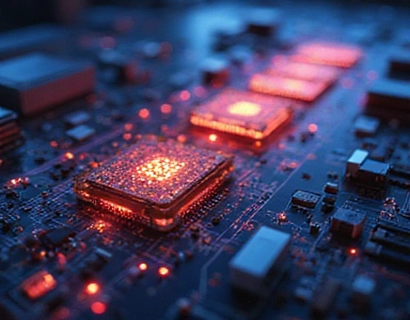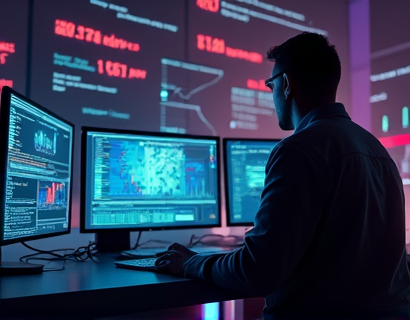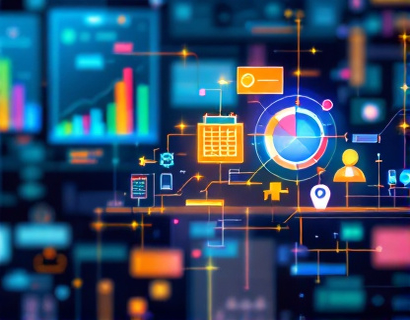Unlocking Enhanced Digital Experiences: Harnessing the Power of AI and Crypto for Next-Gen Transformation
The digital landscape is undergoing a profound transformation, driven by the convergence of artificial intelligence (AI) and cryptocurrency. This synergy is not just a trend but a fundamental shift that promises to unlock new dimensions of innovation, growth, and user engagement. By merging these two cutting-edge technologies, businesses and developers can create next-generation digital experiences that were once thought impossible. This article delves into the ways AI and crypto can be harnessed to drive transformative change, offering a competitive edge in an increasingly complex tech environment.
The integration of AI and cryptocurrency is revolutionizing the way we interact with digital platforms. AI provides the intelligence to analyze vast amounts of data, learn from patterns, and make predictions, while cryptocurrency offers a decentralized, secure, and transparent means of transaction and value exchange. Together, they create a powerful ecosystem that can enhance user experiences, streamline operations, and open up new revenue streams.
Enhancing User Engagement through AI and Crypto
One of the most significant benefits of combining AI and crypto is the ability to create highly engaging and personalized user experiences. AI algorithms can analyze user behavior, preferences, and interactions to deliver tailored content and recommendations. This level of personalization not only keeps users engaged but also increases the likelihood of repeat visits and longer session durations.
Crypto adds another layer of engagement by enabling seamless and secure transactions within these personalized environments. For instance, users can earn and spend digital tokens based on their activities, creating a gamified experience that incentivizes participation. This tokenization can be applied to various scenarios, from social media interactions to gaming platforms, making the digital experience more rewarding and interactive.
Moreover, the transparency and immutability of blockchain technology ensure that user data and transactions are secure and trustworthy. This builds trust among users, who are increasingly concerned about data privacy and security. By leveraging AI to enhance personalization and crypto to ensure security, platforms can create a win-win situation where users feel valued and protected.
Driving Innovation with AI and Crypto
The combination of AI and crypto is a catalyst for innovation across multiple industries. In the finance sector, for example, decentralized finance (DeFi) platforms are redefining traditional banking by offering decentralized lending, borrowing, and trading services. AI algorithms can optimize these services by predicting market trends, managing risks, and automating transactions, making DeFi more accessible and efficient.
In the healthcare industry, AI-driven diagnostics combined with crypto-based patient data management can lead to more accurate and timely medical decisions. Patient data can be securely shared and accessed by authorized healthcare providers, ensuring continuity of care and improving patient outcomes. AI can analyze this data to identify patterns and suggest personalized treatment plans, while crypto ensures that data ownership and privacy are maintained.
The entertainment industry is another area where AI and crypto are driving innovation. Blockchain-based platforms can offer creators a direct way to monetize their content without intermediaries, while AI can curate personalized content recommendations for users. This not only enhances the user experience but also provides creators with new revenue streams and greater control over their work.
Building Decentralized Applications with AI and Crypto
Decentralized applications (dApps) are at the forefront of the AI and crypto revolution. These applications run on blockchain networks, leveraging AI to provide intelligent and adaptive functionalities. dApps can range from decentralized social networks to autonomous marketplaces, all benefiting from the security and transparency of blockchain and the analytical power of AI.
One key aspect of dApps is their ability to operate without central authority, reducing the risk of censorship and increasing user autonomy. AI can enhance this by providing smart contract optimization, fraud detection, and user behavior analysis. For instance, AI can monitor transactions for unusual patterns that might indicate fraudulent activity, ensuring the integrity of the dApp.
Furthermore, AI can improve the user interface and experience of dApps by providing natural language processing (NLP) for better user interactions, computer vision for image and video recognition, and predictive analytics for personalized content delivery. This fusion of technologies makes dApps more user-friendly and capable of handling complex tasks seamlessly.
Economic Benefits and New Revenue Models
The economic implications of integrating AI and crypto are profound. By tokenizing assets and services, businesses can create new revenue streams and increase liquidity. For example, companies can issue utility tokens to reward users for their contributions, such as content creation, data sharing, or platform maintenance. These tokens can be traded on cryptocurrency exchanges, providing a tangible economic incentive for user engagement.
AI can optimize these token-based economies by analyzing market dynamics, predicting token value, and automating trading strategies. This ensures that the token economy remains balanced and sustainable, benefiting both the platform and its users. Additionally, AI-driven financial services can offer decentralized lending and borrowing, enabling users to access capital more easily and efficiently.
The use of smart contracts, powered by AI, can automate and enforce contractual agreements, reducing the need for intermediaries and lowering transaction costs. This not only speeds up processes but also increases transparency and trust among parties. The combination of AI and crypto in economic models can lead to more resilient and adaptive systems that can withstand market fluctuations and disruptions.
Challenges and Considerations
While the potential of AI and crypto is immense, there are challenges and considerations that must be addressed. One of the primary concerns is regulatory compliance. The crypto space is still largely unregulated, and the integration of AI adds another layer of complexity. Businesses must navigate varying legal frameworks and ensure that their applications comply with data protection, anti-money laundering (AML), and know-your-customer (KYC) regulations.
Another challenge is the technical expertise required to develop and maintain AI and crypto solutions. Developing robust and secure systems requires a deep understanding of both technologies, which can be a barrier for many organizations. Collaboration with experts in AI, blockchain, and cybersecurity is essential to overcome these challenges and build reliable systems.
Privacy and security remain top priorities. While blockchain offers transparency, it also raises concerns about data exposure. AI can help mitigate these risks by implementing advanced encryption techniques and privacy-preserving algorithms. Ensuring that user data is anonymized and securely stored is crucial for maintaining user trust and compliance with privacy laws.
Future Prospects and Conclusion
The future of digital transformation is bright when AI and crypto are harnessed together. As these technologies continue to evolve, we can expect even more innovative applications and use cases. The integration of AI with blockchain, often referred to as AI blockchain, is poised to become a cornerstone of the next generation of digital solutions.
In conclusion, the combination of AI and crypto is not just a technological trend but a fundamental shift in how we build and interact with digital systems. By embracing this synergy, businesses and developers can create more engaging, secure, and innovative digital experiences that drive growth and user satisfaction. The path ahead is exciting, and those who embrace these technologies will be well-positioned to lead the way in the digital revolution.





